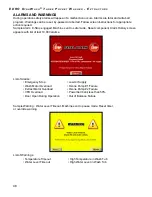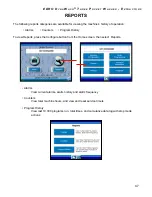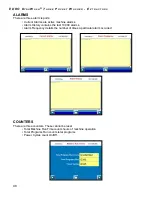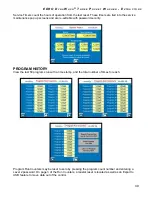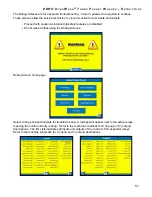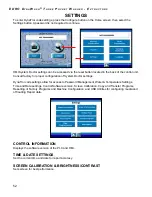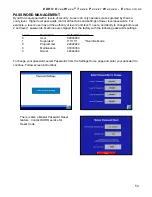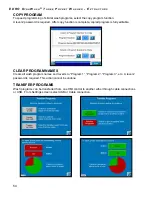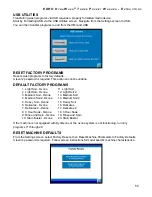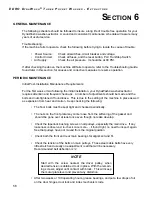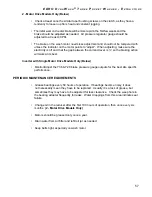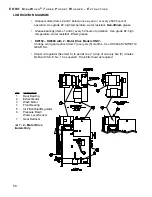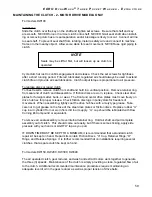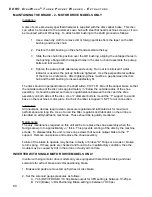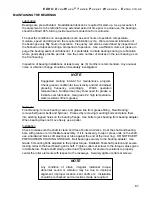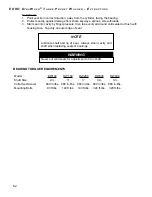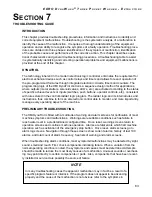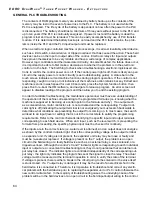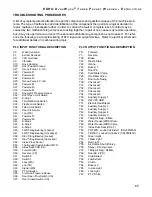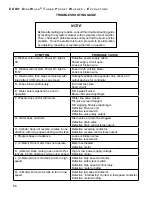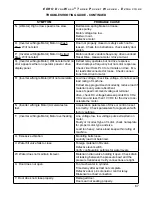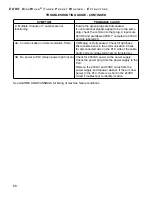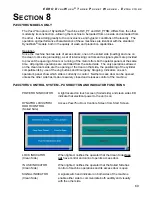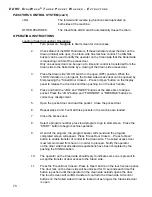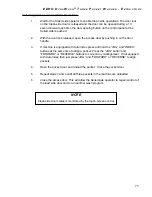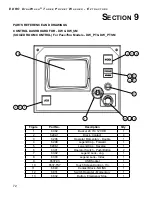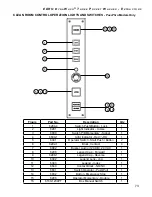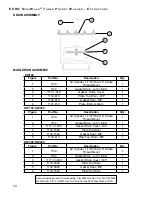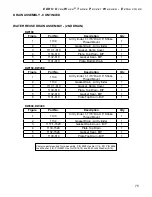
E D R O
D
y n a
W
a s h
®
T
h r e e
P
o c k e T
W
a s h e r
- e
x T r a c T o r s
60
Installation
A disc of some previously specified diameter is supplied with the disc caliper brake. This disc
can either be mounted to the customer’s own hub with steel flat head machine screws, or it can
be mounted with a QD bushing. To attach a QD bushing to the shaft proceed as follows:
1. Use a clean dry cloth to remove dirt or foreign particles from the taper on the QD
bushing and the disc hub.
2. Position the QD bushing on the shaft and assemble the key.
3. Slide the disc hub into position over the QD bushing, aligning the untapped holes in
the bushing’s flange with the tapped holes in the disc hub and assemble the pull-up
bolts and lock washers.
4. Tighten the pull-up bolts alternately and evenly. Run out is minimized if a dial
indicator is used as the pull-up bolts are tightened. Use the perpendicular surface
of the disc as a reference. After tightening there must be a gap between the disc
hub and the QD bushing to insure satisfactory fit.
The disc should run perpendicular to the shaft within .010 T.I.R. Mount the caliper brake so that
the outside radius of the disc runs approximately
1
⁄
16
” below the outside radius of the shoe
assembly. It should be placed so there is equal distance between the disc and the shoe
assembly on both sides of the disc. Use
3
⁄
8
” diameter bolts to mount the “T” support to a solid
base on the machine’s motor plate. Each air chamber is tapped
1
⁄
8
” NPT for air connection.
Lubrication
All pneumatic devices require clean, pressure regulated and lubricated air for maximum
performance and long life. Use of an air line filter, regulator and lubricator on the air line is
standard on all DynaWash
®
machines. These should be regularly monitored.
Maintenance
The only maintenance required on this unit will be to replace the shoe assembly when the
facings are worn to approximately
3
⁄
16
” thick. This prevents scoring of the disc by the machine
screws. To disassemble the unit, remove cap screws that secure caliper brake to the “T”
support. Remove cap screws and replace the shoe assembly.
Failure of the brake to operate may be due to faulty or broken “O” Rings or a weak or broken
return spring. If these parts are checked and found to be in satisfactory condition, then the
trouble may be caused by dirt in the air line or faulty air controls.
MAINTAINING THE BRAKE - 2 - MOTOR DRIVE MODELS ONLY
INVERTER WITH SINGLE MOTOR DRIVE MODELS ONLY
Inverter with single motor drive models only are equipped with electronic braking and dual
solenoids for extract brake and JOG positioning brake.
1. Brakes and pads are mounted on flywheel or disc brake.
2. Set the solenoid gauge pressures as follows:
A. Y36 (DW VFD HSB) / Hi Slip brake output for VFD setting is between 10-20 psi.
B. Y20 (Brake) / JOG Positioning Brake setting is between 70-90 psi.

